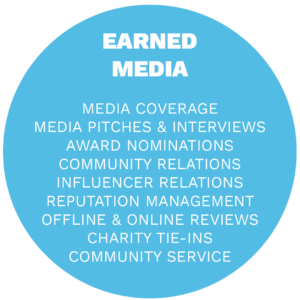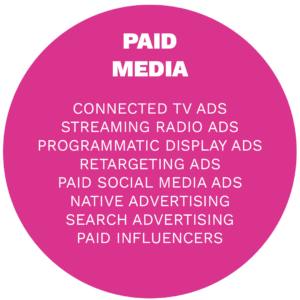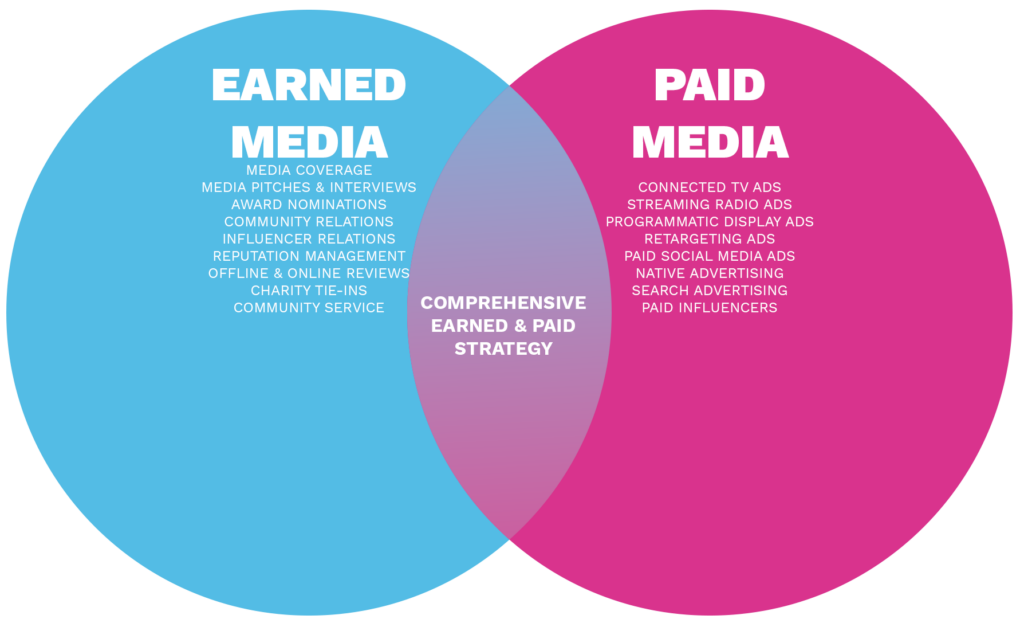Earned media and paid media are two distinct marketing strategies, each with their unique benefits and drawbacks. However, when used together in a strategic manner, they can create a powerful and effective marketing campaign.
Earned Media
Earned media refers to any publicity or exposure that a brand receives through third-party sources, such as news articles, reviews, social media mentions, or word-of-mouth. Essentially, it is any coverage that a brand earns without directly paying for it. Earned media is often seen as the most valuable form of marketing because it is perceived as more trustworthy and credible by consumers. It’s also often free or low cost, making it an attractive option for businesses with limited marketing budgets.
Examples of earned media include product reviews on influential blogs or in major publications, social media shares or mentions, news coverage of a new product launch, or positive customer reviews on sites like Yelp or Google Reviews.
One of the key advantages of earned media is that it can reach a wide audience with relatively little effort. If a major publication writes an article about a new product, for example, it could potentially reach millions of readers. This can be incredibly valuable for brands, as it can help increase awareness and drive traffic to their website or store.
Earned media can also help build credibility and trust with potential customers. When someone sees that a brand has been mentioned in a reputable publication or has received positive reviews from other customers, they are more likely to trust that brand and consider purchasing from them.
However, earned media can also be unpredictable and difficult to control. Brands don’t have direct control over the messaging or tone of earned media, and negative coverage or reviews can have a significant impact on their reputation.
Paid Media
Paid media, on the other hand, refers to any form of advertising or promotional content that a brand pays for to reach a specific audience. This can include things like display ads, social media ads, influencer partnerships, or sponsored content. Paid media allows brands to have more control over the messaging and targeting of their marketing campaigns, which can help them reach their desired audience more effectively.
One of the key advantages of paid media is that it allows brands to target specific demographics or audiences. For example, a brand selling luxury skincare products might use Facebook ads to target women between the ages of 30-50 with a certain level of income and interests in beauty or skincare.
Paid media can also be more measurable than earned media. Brands can track metrics like click-through rates, conversion rates, and ROI to determine the effectiveness of their campaigns and make data-driven decisions about where to allocate their marketing budgets.
However, paid media can be expensive, and it can be difficult to cut through the noise and stand out among all the other ads and promotional content that consumers are exposed to on a daily basis. Additionally, paid media is often perceived as less trustworthy and credible than earned media, which can make it less effective in building long-term relationships with customers.
Combining Earned and Paid Media
While earned media and paid media have their unique advantages and disadvantages, combining the two can create a powerful and effective marketing campaign that leverages the benefits of both.
One way to combine earned and paid media is to use earned media to boost the effectiveness of paid media. For example, a brand might use a positive review or mention from a major publication or influencer as the basis for a Facebook or Instagram ad. This can help increase the credibility and trustworthiness of the ad, and potentially lead to higher conversion rates and ROI.
Conversely, paid media can be used to amplify the reach of earned media. For example, a brand might sponsor a social media influencer to create a post about their product or service. The post would be considered earned media, but the brand could use paid media to boost the post’s reach and exposure
Earned media and paid media are two powerful marketing strategies that can be used together to create a more effective and well-rounded marketing campaign. By leveraging the unique benefits of both strategies, brands can increase their reach, credibility, and ROI.
However, it’s important to remember that combining earned and paid media requires careful planning and execution. Brands must ensure that their messaging is consistent across all channels and that they are targeting the right audiences with the right messages.
Additionally, it’s important to continuously monitor and adjust marketing campaigns to ensure that they are meeting their goals and objectives. By regularly analyzing metrics like click-through rates, conversion rates, and ROI, brands can make data-driven decisions about where to allocate their marketing budgets and optimize their campaigns for maximum effectiveness.
Ultimately, by using a strategic combination of earned and paid media, brands can create a marketing campaign that not only drives sales but also builds trust and credibility with their target audience.





